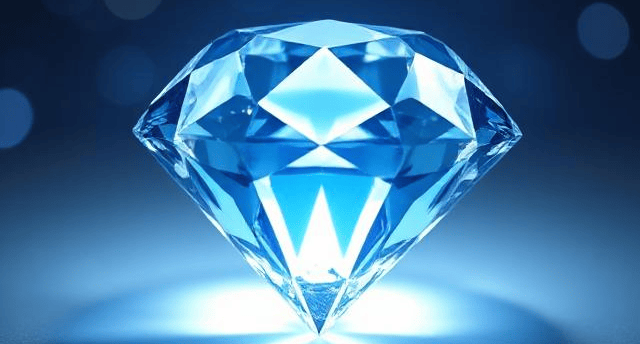The Ultimate Guide to Diamonds: Quality, Uses, and Buying Tips
Learn everything about diamonds, including their quality, types, uses, and how to buy the perfect one. Discover expert tips to choose a high-quality diamond.
LIFESTYLE
3/18/20253 min read


💎What is a Diamond?
A diamond is a precious gemstone made of pure carbon that has been subjected to intense heat and pressure deep within the Earth's crust. Due to its exceptional hardness and brilliance, diamonds are highly prized in jewelry and industrial applications.
Importance of Diamonds in Modern Society
Diamonds symbolize love, luxury, and status. They are widely used in engagement rings, fashion accessories, and industrial tools due to their unmatched durability and cutting precision.
Formation and Types of Diamonds
How Diamonds Are Formed
Diamonds form under extreme pressure and high temperatures deep within the Earth’s mantle over billions of years. Some diamonds are also created in laboratories using high-pressure, high-temperature (HPHT) or chemical vapor deposition (CVD) methods.
Types of Diamonds
Diamonds are classified based on color, clarity, and origin:
Natural Diamonds – Mined from the Earth.
Lab-Grown Diamonds – Created in controlled environments.
Colored Diamonds – Rare hues such as blue, pink, and yellow.
Synthetic and Simulant Diamonds – Includes moissanite and cubic zirconia.
Diamond Quality Factors
The 4 Cs of Diamond Quality
The four key characteristics that determine a diamond’s value are:
Cut – Affects brilliance and light reflection.
Color – Ranges from colorless to yellow/brown.
Clarity – Measures internal and external flaws.
Carat Weight – Denotes the size of the diamond.
How to Identify a High-Quality Diamond
Choose a diamond with an excellent cut grade for maximum brilliance.
Opt for near-colorless grades (D-F) for the best quality.
Look for a clarity rating of VS2 or higher to ensure minimal imperfections.
Ensure the diamond comes with a GIA or AGS certification for authenticity.
Popular Diamond Cuts
Round Brilliant Cut
The most popular cut, known for its unmatched sparkle due to its 58 facets.
Princess Cut
A modern, square-shaped diamond that offers exceptional brilliance and style.
Emerald, Oval, and Marquise Cuts
Emerald Cut – A rectangular shape with step-cut facets for a sleek appearance.
Oval Cut – An elongated shape that creates the illusion of a larger size.
Marquise Cut – A football-shaped cut that maximizes carat weight.
Uses of Diamonds
Diamonds in Jewelry
Diamonds are commonly used in:
Engagement rings
Necklaces and pendants
Earrings and bracelets
Industrial Applications
Due to their hardness, diamonds are used in:
Drilling and cutting tools
Abrasive powders
Glass and metal engraving
Medical and Scientific Uses
Diamonds play a role in:
Surgical scalpels for precision cutting
Laser technology
Optical instruments
Buying Guide
Tips for Buying a Diamond
Always check for certification (GIA, AGS).
Determine the best cut and clarity within your budget.
Ensure ethical sourcing by buying conflict-free diamonds.
Ethical and Conflict-Free Diamonds
Conflict-free diamonds are sourced responsibly, avoiding funding unethical mining practices. Look for certifications such as the Kimberley Process Certification Scheme (KPCS).
Diamond Care and Maintenance
Cleaning and Storage Tips
Clean diamonds using a soft brush and mild soapy water.
Store separately to prevent scratches.
Avoid harsh chemicals that may damage the setting.
Common Mistakes to Avoid
Using abrasive cleaners that scratch the diamond.
Storing multiple pieces together without protection.
Wearing diamonds while doing rough activities.
FAQs About Diamonds
1. What is the difference between natural and lab-grown diamonds?
Natural diamonds are formed in the Earth over billions of years, while lab-grown diamonds are created using advanced technology but have the same physical properties.
2. How do I know if my diamond is real?
You can check for authenticity using a diamond tester, loupe, or by getting a professional gemological appraisal.
3. What is diamond fluorescence?
Fluorescence refers to how a diamond reacts under UV light. Some diamonds exhibit a blue glow, which can slightly impact appearance and value.
4. Are diamonds a good investment?
While diamonds retain their value, they are not the best investment for financial returns. They are more valued for their aesthetic and sentimental worth.
5. What are the rarest diamond colors?
The rarest diamonds include red, blue, and pink diamonds, which command high prices due to their scarcity.
6. How often should I clean my diamond?
For best results, clean your diamond once a month and have it professionally inspected annually.
Conclusion
Summary of Key Points
Diamonds are valuable gemstones known for their brilliance, durability, and wide applications in jewelry and industry. Understanding the 4 Cs, different cuts, and buying considerations can help you choose the perfect diamond.
Final Thoughts
Whether purchasing a diamond for an engagement ring, fashion, or investment, knowing how to assess quality and care for it properly ensures its lasting beauty and value.
